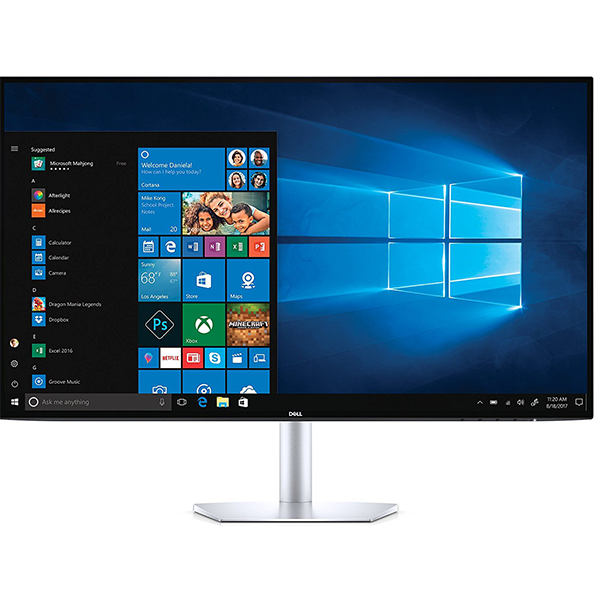BenQ PD2700U 4K HDR Monitor Review: Pro-Level Accuracy, Attractive Price
Why you can trust Tom's Hardware
Brightness and Contrast
To read about our monitor tests in-depth, check outDisplay Testing Explained: How We Test Monitors and TVs. We cover Brightness and Contrast testing on page two.
Uncalibrated – Maximum Backlight Level
We’re comparing the PD2700U against a pile of 400-nit, HDR monitors, the Dell S2719DM, LG 34GK950F, LG 27UK850, AOC Agon AG322QC4 and BenQ SW271.
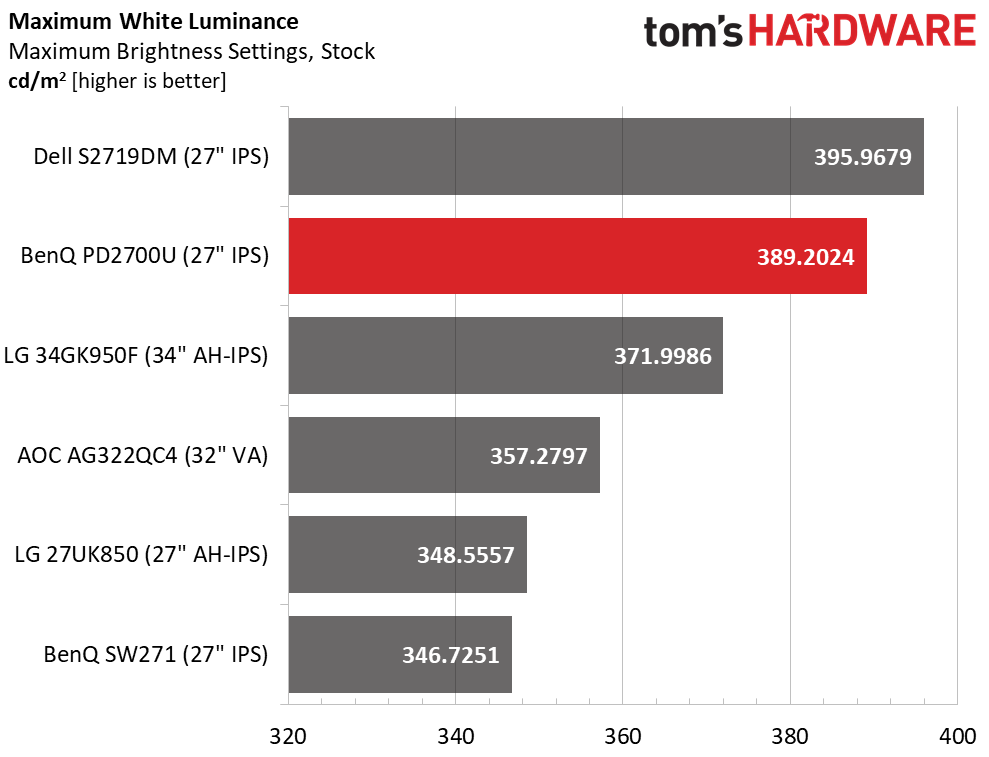
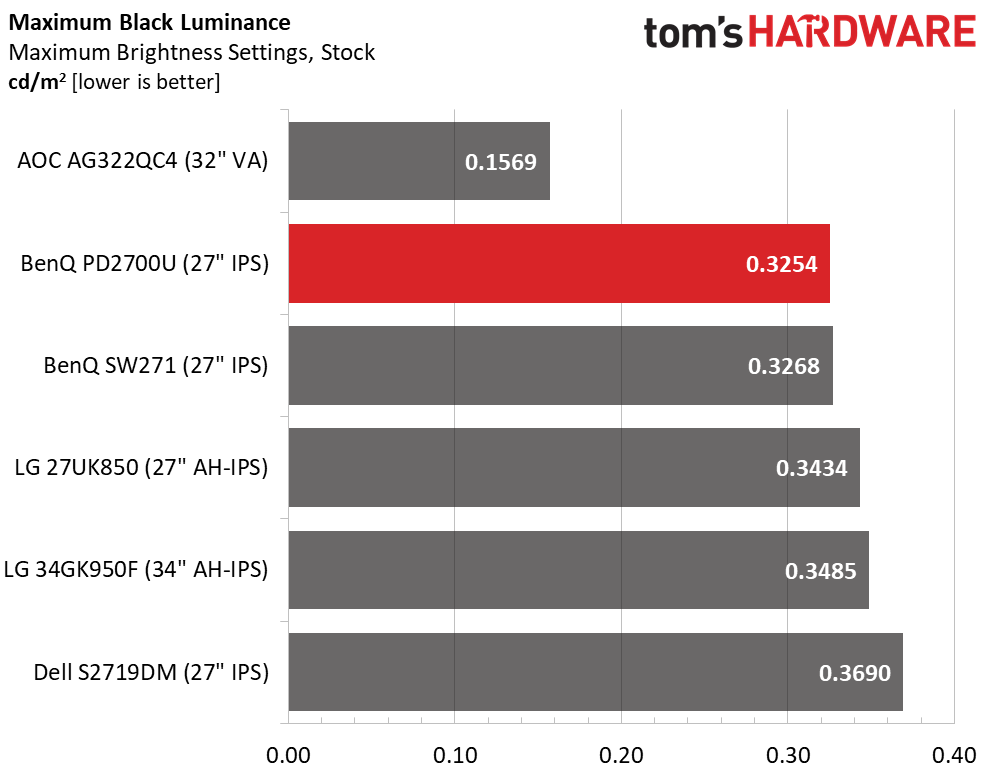
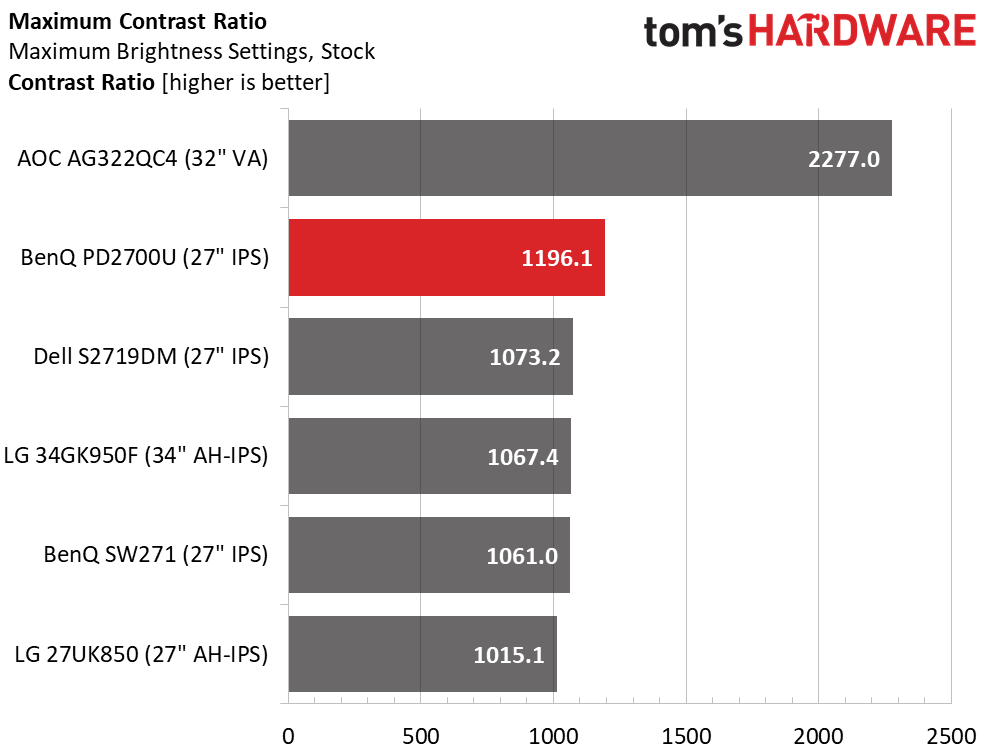
In our SDR signal test, the PD2700U easily beat its claim of 350 nits max brightness. It is a very bright screen, so you’ll want to turn the backlight to about half its range to achieve a more-comfortable 200 nits.
At max brightness, black levels were excellent among the other IPS panels here with the PD2700U showing a slight edge over its brother, the SW271. Note, the SW271 is a professional display and costs a bit more ($1,089 / £1,055 at the time of writing). Resulting contrast was an excellent 1,196.1:1.
After Calibration to 200 nits
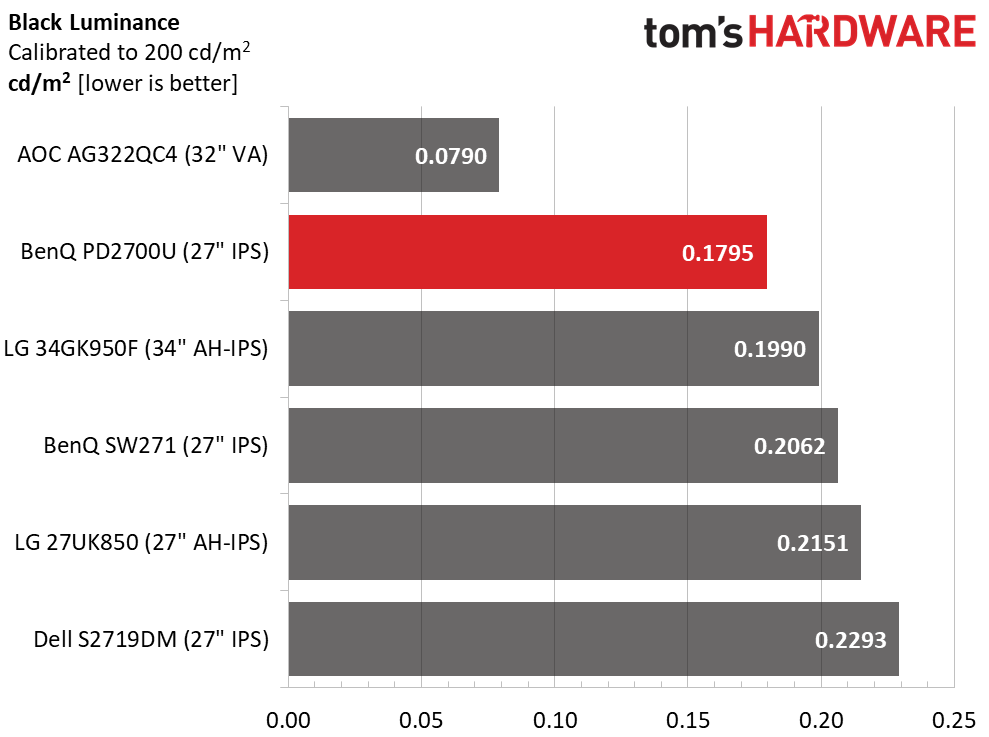
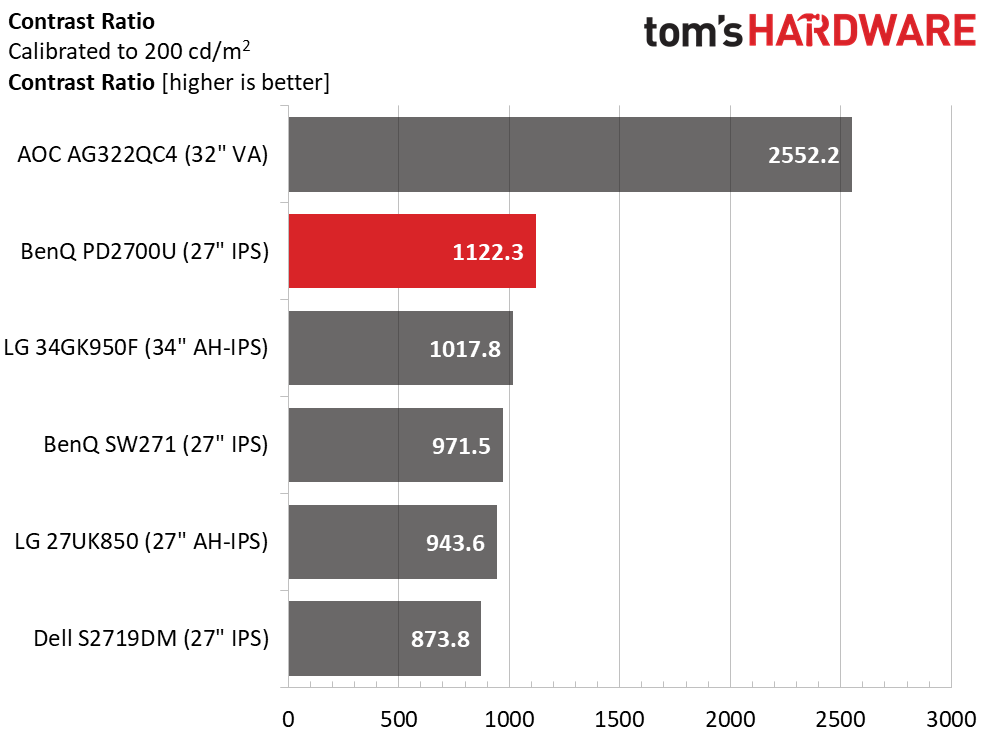
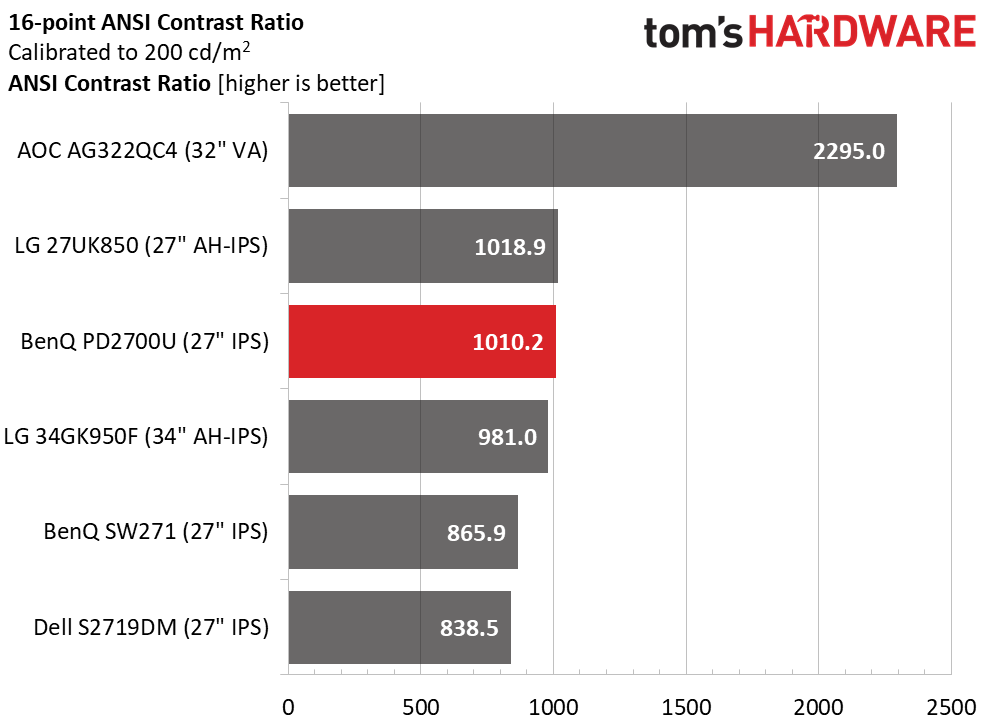
Calibration to 200 nits brightness improved the PD2700U’s black level advantage quite a bit, though it still couldn’t keep up with the VA-based AG322QC4. We lost an insignificant amount of contrast when making our adjustments, but the slight gain in color saturation was well worth it.
ANSI contrast was strong at 1,010.2:1. Any IPS monitor that delivers over 1,000:1 in this test—a good measure of real-world performance, since the test pattern mimics actual content—is above-average. Our PD2700U sample would have performed even better were it not for a slight hotspot in the lower right of the screen.
MORE: Best Gaming Monitors
Get Tom's Hardware's best news and in-depth reviews, straight to your inbox.
MORE: How We Test Monitors
MORE: All Monitor Content
Current page: Brightness and Contrast
Prev Page Features and Specifications Next Page Grayscale, Gamma and Color
Christian Eberle is a Contributing Editor for Tom's Hardware US. He's a veteran reviewer of A/V equipment, specializing in monitors. Christian began his obsession with tech when he built his first PC in 1991, a 286 running DOS 3.0 at a blazing 12MHz. In 2006, he undertook training from the Imaging Science Foundation in video calibration and testing and thus started a passion for precise imaging that persists to this day. He is also a professional musician with a degree from the New England Conservatory as a classical bassoonist which he used to good effect as a performer with the West Point Army Band from 1987 to 2013. He enjoys watching movies and listening to high-end audio in his custom-built home theater and can be seen riding trails near his home on a race-ready ICE VTX recumbent trike. Christian enjoys the endless summer in Florida where he lives with his wife and Chihuahua and plays with orchestras around the state.


